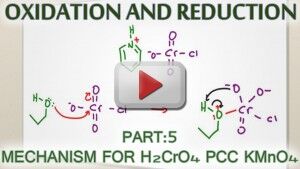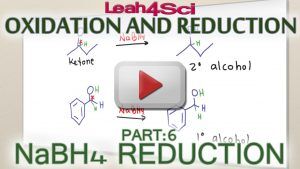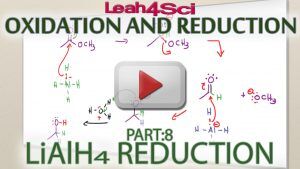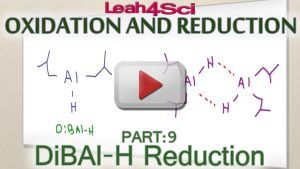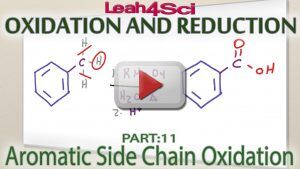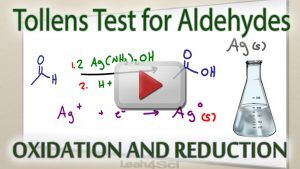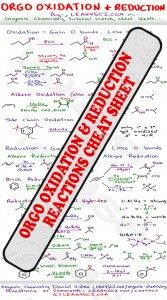
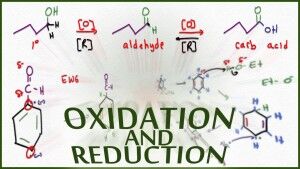 Oxidation and reduction reactions will come up over and over in your organic chemistry course.
Oxidation and reduction reactions will come up over and over in your organic chemistry course.
You may remember redox from general chemistry as the topic involving half-cells, batteries, and metals with changing oxidation numbers.
While the science hasn't changed at the organic chemistry level, the molecules and overall presentation is very different.
Instead of studying circuits and moving electrons, you're looking at reactions of hydrocarbons gaining or losing bonds to oxygen and hydrogen atoms.
This series breaks down the various oxidation and reduction reactions you'll come across in your organic chemistry course.
Download my Orgo Redox cheat sheet to follow along and try the redox practice quiz
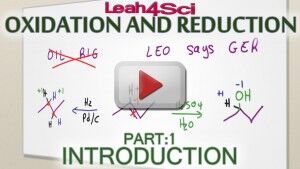 Video 1 – Introduction to Oxidation and Reduction Reactions in Organic Chemistry
Video 1 – Introduction to Oxidation and Reduction Reactions in Organic Chemistry
This video introduces the concept of redox at the organic chemistry level. Learn how to identify oxidation and reduction reactions by analyzing oxidation number, bonds/atoms gained and bonds/atoms lost.
Examples include redox of alkenes, alkynes, alcohols and more, as well as what to look out for when faced with an unfamiliar reagent.
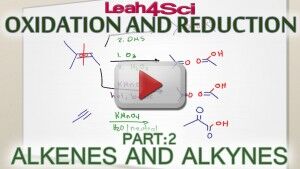 Video 2 – Oxidation & Reduction Alkenes and Alkynes
Video 2 – Oxidation & Reduction Alkenes and Alkynes
This video serves as a quick overview of oxidation/reduction reactions you've likely covered when studying alkenes and alkynes.
Specific focus on how to recognize Oxidation and Reduction based on reactants/product, how to identify reagents, and of course oxidative cleavage comparisons.
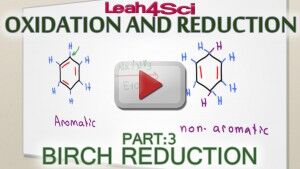 Video 3 – Birch Reduction Reaction and Mechanism
Video 3 – Birch Reduction Reaction and Mechanism
The Birch Reduction is an interesting reaction that appears to go against the desire for molecular stability. This reaction has the power to disrupt and aromatic compound such as benzene and turn it into a partially reduxed non-conjugated diene
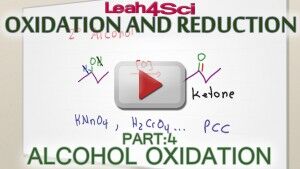 Video 4 – Oxidation of Alcohols to Aldehyde Ketone and Carboxylic Acid
Video 4 – Oxidation of Alcohols to Aldehyde Ketone and Carboxylic Acid
Oxidation of Alcohol products will vary based on the substitution of the starting alcohol and the specific oxidizing reagent used for the reaction.
Products will include Aldehydes, Ketones, or Carboxylic acids.
Video 5 – Alcohol Oxidation Mechanism
The nature of alcohol oxidation depends greatly on the molecules reactivity and the nature of the oxidizing reagent.
This video walks you through the step by step mechanism for the common alcohol oxidation mechanisms. Chromic Acid, PCC, and KMnO4
Video 6 – Sodium Borohydride (NaBH4) Reduction
You'll cover a variety of reactions involving the reduction of carbonyl compounds.
NaBH4 is a weak reducing agent commonly seen reacting with ketones to form secondary alcohols and aldehydes to form primary alcohols.
This video will help you understand the nature of this reaction, sodium borohydride activity, and of course the step by step reaction mechanism.
Video 7 – Sodium Borohydride (NaBH4) vs Lithium 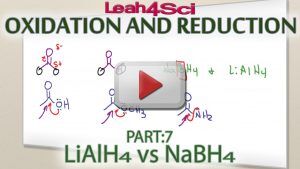 Aluminum Hydride (LiAlH4)
Aluminum Hydride (LiAlH4)
LiAlH4 is the stronger ‘hydride' carbonyl reducing agent. In addition to reducing aldehydes and ketones, it'll also reduce carboxylic acids and carboxyl derivatives.
This video takes you through the molecule, reaction, examples and step by step mechanism.
Video 8 – Lithium Aluminum Hydride (LiAlH4) Reduction
Video 9 – DiBAl-H Reduction Reaction of Ester or Nitrile to Aldehyde
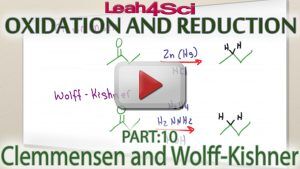 Video 10 – Clemmensen and Wolff Kishner Reduction of Ketones and Aldehydes
Video 10 – Clemmensen and Wolff Kishner Reduction of Ketones and Aldehydes
Video 11 – Aromatic Side Chain Oxidation
Benzene rings are not easily oxidized. Neither are alkanes. However an alkyl group ON a benzene is susceptible to aromatic side chain oxidation. This video shows you what to look out for.
Video 12 – Tollens Reagent Silver Mirror Test for Aldehydes
The Tollens Test for Aldehydes also known as the Silver Mirror Test is a lab technique used to test for the presence of aldehydes. In the presence of Ag+ as the aldehyde is oxidized to a carboxylic acid, the Ag+ is oxidized to a shiny metallic silver ‘mirror’.
Additional redox videos (Coming soon)
- Redox in Lab: Jones
- Oxidation/Reduction of Amines, Imines, and Nitriles
